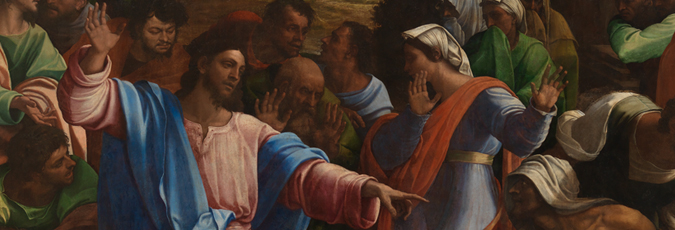Friendship and rivalry
Rome was a natural destination for artists seeking powerful and papal patronage and knowledge of classical art. When Sebastiano arrived in 1511, it was a centre of great artistic innovation and fierce competition.
Michelangelo and Raphael were working on major projects in the Vatican for Pope Julius II (reigned 1503–1513). Michelangelo was painting the Sistine Chapel ceiling, while the younger Raphael was decorating the papal apartments and had just finished the first room there, the so-called 'Stanza della Segnatura', which includes the famous ‘School of Athens’. When comparing them, critics praised Michelangelo’s imagination and ability to render figures sculpturally, but declared Raphael the better painter because he combined these skills with a more sophisticated use of colour.
At the suburban home of Agostino Chigi, today known as Villa Farnesina, Sebastiano was also pitted against Raphael. They were asked to paint individual parts of the story of Polyphemus and Galatea on the same wall. Raphael, whose dazzling ‘Galatea’ was painted second, ignored the scale and horizon line established in Sebastiano’s ‘Polyphemus’. Nonetheless, Sebastiano’s work drew praise, for its confident and innovative use of colour.
By providing Sebastiano with drawings and designs, Michelangelo hoped that he and the skilled colourist from Venice could marginalise their rival. This alliance led to a close friendship.

